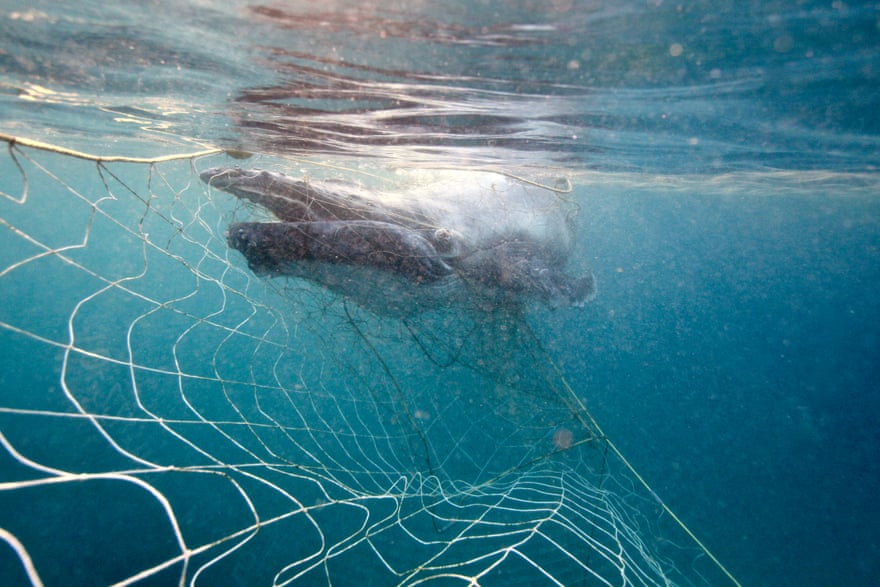It was a six-minute masterclass within the politics of shark nets in New South Wales.
On Wednesday, the Waverley council mayor, Paula Masselos, appeared on Sky Information to speak about her opposition to the continued use of shark nets off Sydney’s Bondi seaside.
Chris Kenny opened the phase by reminding his viewers it had been six months since a man had been killed by a great white shark off a Sydney seaside – 35-year-old diving teacher Simon Nellist, who had publicly opposed shark nets, was attacked at Little Bay.
Kenny then peppered Masselos with a sequence of loaded questions. “Have you ever informed them sufficient about this?” “Do you consider that your insurance policies mirror the general public world?”
Masselos tried to clarify her place. Waverely council needed a greater, smarter method to shark mitigation, one that truly protected individuals and didn’t indiscriminately kill marine life.
However as she tried to clarify, Kenny lower her off: “Are you ready to take the nets away and simply take the possibility we’ll see extra fatalities at a few of our hottest seashores?”
It was a irritating trade. The nets are owned and operated by the state authorities, that means Masselos doesn’t have the facility to drag them from the water.

Masselos just isn’t alone in her opposing the nets. Till lately, the marketing campaign to scrap them was the area of environmental activists and animal rights teams. However more and more, native councils, mayors and state MPs have been getting on board.
A 12 months in the past, Waverley council was considered one of eight native authorities authorities to cross motions opposing the continued use of shark nets, reflecting work that had been underway for years to search out higher options.
Adam Crouch, a state Liberal MP, has been actively campaigning for his Central Coast voters to trial a net-free summer season – and the state authorities has invested $85m in creating higher shark administration methods.
Politics has been catching up with science, however the concern of potential shark assaults makes the battle a tough one for these pursuing change.
Nets don’t work
“The actual shark of this story is the politician – that’s my evaluation from having labored on this challenge for 16 years,” says Dr Christopher Pepin-Neff, a political scientist with the College of Sydney. “The very fact is the nets don’t work. It’s a lie that’s informed to the general public to assist guarantee politicians are re-elected.”
Pepen-Neff says there was a recognition from the beginning of New South Wales’ meshing program that nets didn’t actually assist.
This system started after a committee was convened in 1935 to research mitigation measures following a spate of shark attacks. Nets got here lifeless final on an inventory of proposals to handle the chance and have been solely agreed to indicate the general public that one thing was being executed.
Signal as much as obtain the highest tales from Guardian Australia each morning
It took two years for the NSW authorities to observe by and even then, it was pushed by considerations a shark assault during celebrations for the 150th anniversary of the state would make dangerous headlines.
Later, it will be steered the elevated variety of deadly assaults within the Nineteen Twenties and Thirties was resulting from the blood and gore dumped from Sydney’s abattoirs on the time, which drew the animals nearer to shore and swimmers.
However, Pepin-Neff says, the nets got here to be related to security within the public’s eyes, and eradicating them grew to become too politically troublesome.
They’re now put in throughout 51 seashores from Newcastle to Wollongong. At 150 metres lengthy, six metres excessive and set at a depth of 10 metres, the nets don’t cowl the complete size of seashores and infrequently the general public don’t know the place they’re.
The Department of Primary Industries states “the nets don’t create a complete barrier between swimmers and sharks” however are “designed to intercept sharks close to meshed seashores which reduces the possibility of a shark interplay”.
However two in each 5 sharks caught in nets are literally discovered on the seaside facet of the online and assaults nonetheless happen at meshed seashores. Laurence Trebek, from the Humane Society Worldwide, says the nets might not be superb at stopping goal sharks however they’re good at killing marine life.
“The most effective guess I can provide is a few 20,000 marine animals have been killed in this system and what we’re now realising is that it’s for nothing greater than a false sense of safety,” Trebek says.
In response to a recent DPI report on shark net performance, 376 marine animals have been tangled in NSW nets in 2021-22. That quantity included 51 “goal sharks” and 325 “non-target animals”.
The goal sharks included 28 white sharks, 12 bull sharks and 11 tiger sharks. The opposite marine life caught by the nets included 149 non-target sharks such gray nurse sharks and hammerheads, 130 rays, 40 turtles, one dolphin and one humpback whale.
Of all of the animals caught in nets, simply over a 3rd – 142 – have been launched alive.
Trebek believes the shark meshing program is in its “loss of life throes” as public consciousness grows however admits “it takes important political braveness to make this occur”.

Pepin-Neff says that regardless of a groundswell of help by native and state public officers, he’s skeptical about whether or not they may ever be eliminated.
A spokesperson for the NSW agriculture minister, Dugald Saunders, says there are at present no plans to take away present nets.
“I typically speak about ‘loser points’,” Pepen-Neff says.
“These are points for which there’s a social and political infrastructure which is constructed round not giving them oxygen, not giving them consideration, and never serving to them cross the end line, even once they have widespread help.
“Public help is clearly constructing for training, for non-lethal strategies, however taking shark nets out of the water is a ‘loser challenge’, politically.”
A false sense of safety
As an ocean swimmer herself, Masselos has pores and skin within the sport.
Within the 20 years since she first stepped out of the Bronte baths and into the saline waters of Nelson Bay, she’s often swum from Bronte to MacKenzie’s seaside and again.
The mayor says the ocean affords a “beautiful sense of freedom and a way of wellbeing” that allowed her to share a world with leafy sea dragons, turtles, rays – and sharks.
She has by no means seen a shark however says there was no swimming with out threat, which is why there are guidelines about ocean swimming: “If there are many fish within the water, get out. Don’t swim at nightfall. Don’t swim at daybreak – and simply use your frequent sense.”
Masselos says she appreciates the nets are an “emotive challenge” for a lot of however she believes they provide little greater than a “false sense of safety”.
“I do know that individuals I’ve been chatting with are shocked once they hear that turtles and dolphins and dugongs are caught up in these nets and die.
“We share our oceans with marine creatures. We’re of their habitat. So what can we do to maintain our individuals protected but additionally scale back the horrible by-catch? We’re within the twenty first century, we’ve received the know-how. Let’s be good about this.”
The mayor says the council would really like a mix of good drumlines, drones and sonar listening buoys deployed. Sensible drumlines send a signal to authorities when marine life is caught, permitting doubtlessly dangerous sharks to be tagged earlier than being launched. When these sharks later come inside vary of sonar listening buoys, a warning will be issued and the state of affairs monitored utilizing drones.








